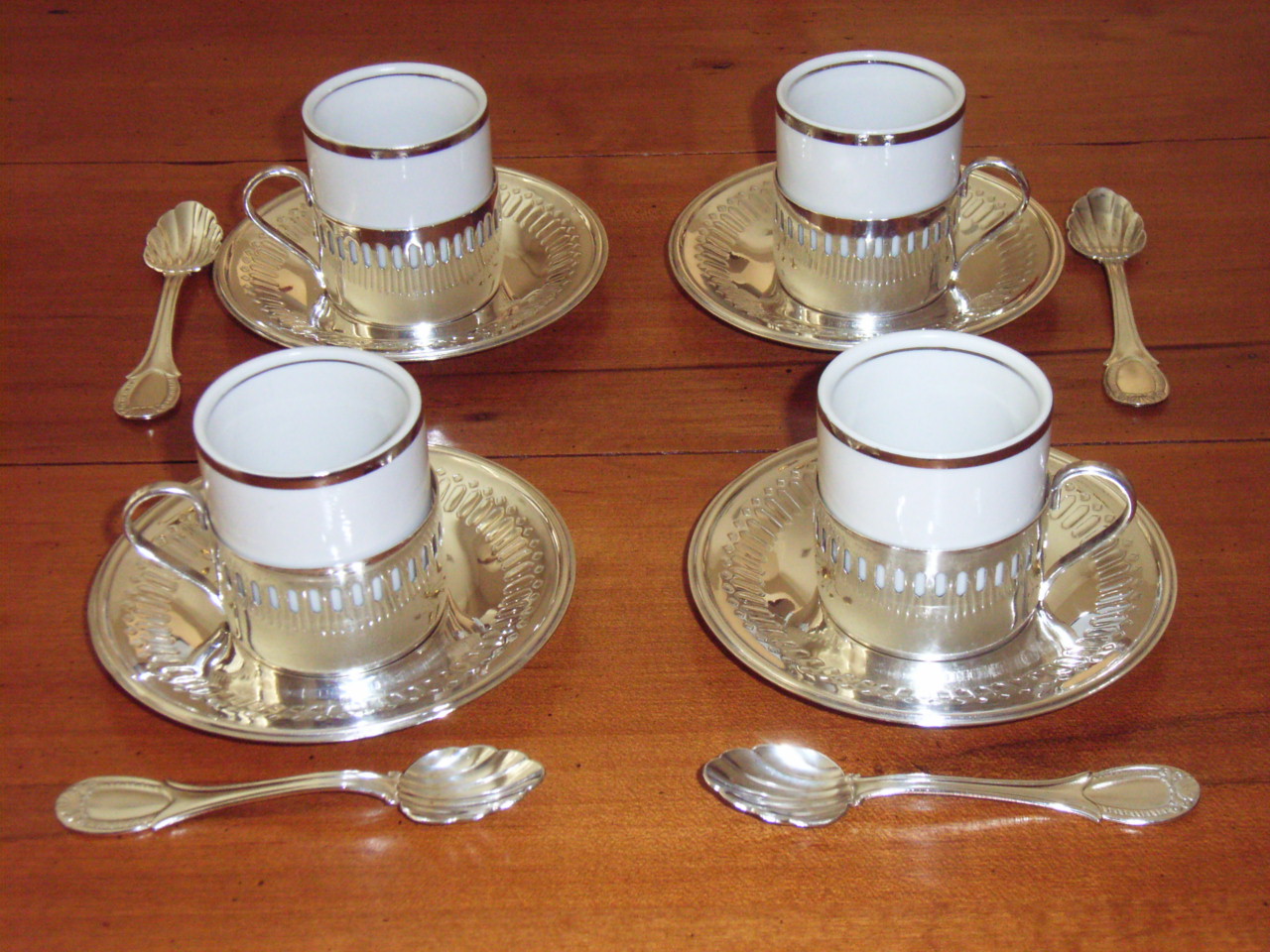Cups to Teaspoons Converter
Result:
Our cups to teaspoons Converter is the perfect tool for knowing the equivalent of cups to teaspoons and vice versa. If you have been looking for a simple way to convert cups to teaspoons or teaspoons to cups, you are at the right place. Simply enter the value for cups or teaspoon and click on the convert button to get the result.
Have you ever been in the middle of cooking your favorite recipe when you realized you don't have the right measuring tool? Maybe the recipe calls for cups, but you only have teaspoons. Don't worry! This article will teach you all about converting cups to teaspoons, so you can keep cooking without any hiccups.
Knowing how to switch between different kitchen measurements is super helpful. It can save you time and make your cooking easier. Plus, it's a great way to impress your friends and family with your kitchen smarts!
On this page, we'll talk about cups and teaspoons, explain what they are, and show you how to convert between them. By the end, you'll be a pro at changing cups to teaspoons and vice versa. Let's get started!

What Is a Cup?
When we talk about a cup in cooking, we're not talking about the mug you drink your hot chocolate from. A cup is a standard unit of measurement used in recipes. It's especially common in American cooking.
A cup is used to measure both liquid and dry ingredients. For example, you might use a cup to measure water for making rice, or to measure flour for baking cookies. One cup is equal to 8 fluid ounces or about 237 milliliters.
Here are some common things you might measure using cups:
- Water, milk, or juice
- Flour or sugar
- Chopped vegetables
- Cooked rice or pasta
It's important to know that there are different types of cups used around the world. In the United States, we use the US cup, which is slightly different from the metric cup used in many other countries. For this article, we'll focus on the US cup, since that's what most American recipes use.
What Is a Teaspoon?
Now let's talk about teaspoons. Like cups, teaspoons are also used for measuring in cooking and baking. But as you might guess from the name, they're much smaller than cups.
A teaspoon is a small spoon that you might use to stir sugar into your tea. In cooking, we use measuring teaspoons, which hold exactly one teaspoon of liquid or dry ingredients. One teaspoon is equal to about 5 milliliters.
You'll often use teaspoons to measure things like:
- Spices (like cinnamon or salt)
- Baking powder or baking soda
- Vanilla extract
- Medicine (though always use special medicine spoons for this!)
It's important to know that the teaspoons we use for measuring are different from the teaspoons we eat with. Eating teaspoons can be different sizes, but measuring teaspoons are always the same. When a recipe calls for a teaspoon, it means a measuring teaspoon.
How Many Teaspoons Are in a Cup?
Now that we know what cups and teaspoons are, let's get to the big question: how many teaspoons are in a cup?
The answer is: There are 48 teaspoons in one cup.
This might seem like a lot, and it is! Remember, teaspoons are much smaller than cups. It takes a lot of teaspoons to fill up a whole cup.
Knowing this conversion can be super helpful in the kitchen. For example, let's say you're making a recipe that calls for 1/4 cup of vanilla extract, but you only have a teaspoon. Instead of guessing, you can do the math:
If 1 cup = 48 teaspoons, then 1/4 cup = 48 ÷ 4 = 12 teaspoons
So you'd know to measure out 12 teaspoons of vanilla extract.
How to Convert Cups to Teaspoons
Now, let's learn how to convert any number of cups to teaspoons. The good news is, there's a simple formula you can use:
teaspoons = cups × 48
This means you take the number of cups and multiply it by 48 to get the number of teaspoons.
Let's break this down step by step:
- Start with the number of cups you want to convert.
- Multiply that number by 48.
- The result is the number of teaspoons.
Let's try some examples:
Example 1: Converting 1/2 cup to teaspoons
- We start with 1/2 cup.
- We multiply 1/2 by 48: 1/2 × 48 = 24
- So, 1/2 cup equals 24 teaspoons.
Example 2: Converting 2 cups to teaspoons
- We start with 2 cups.
- We multiply 2 by 48: 2 × 48 = 96
- So, 2 cups equal 96 teaspoons.
Example 3: Converting 1/3 cup to teaspoons
- We start with 1/3 cup.
- We multiply 1/3 by 48: 1/3 × 48 = 16
- So, 1/3 cup equals 16 teaspoons.
Remember, you can use this formula for any number of cups, even if it's a fraction or a decimal. Just multiply by 48, and you'll have your answer in teaspoons!
Cup to Teaspoon Conversion Table
| Cups | Teaspoons |
|---|---|
| 1/8 cup | 6 teaspoons |
| 1/4 cup | 12 teaspoons |
| 1/3 cup | 16 teaspoons |
| 1/2 cup | 24 teaspoons |
| 2/3 cup | 32 teaspoons |
| 3/4 cup | 36 teaspoons |
| 1 cup | 48 teaspoons |
| 1 1/4 cups | 60 teaspoons |
| 1 1/3 cups | 64 teaspoons |
| 1 1/2 cups | 72 teaspoons |
| 1 2/3 cups | 80 teaspoons |
| 1 3/4 cups | 84 teaspoons |
| 2 cups | 96 teaspoons |
| 2 1/4 cups | 108 teaspoons |
| 2 1/2 cups | 120 teaspoons |
| 2 3/4 cups | 132 teaspoons |
| 3 cups | 144 teaspoons |
| 3 1/2 cups | 168 teaspoons |
| 4 cups | 192 teaspoons |
| 5 cups | 240 teaspoons |
Practical Tips for Using Cup to Teaspoon Conversions
Now that you know how to convert cups to teaspoons, let's talk about when and why you might need to do this.
When to Use Cups vs. Teaspoons
In general, cups are used for larger amounts of ingredients, while teaspoons are used for smaller amounts. Here are some examples:
Use cups for:
- Flour, sugar, or other dry ingredients in baking
- Water, milk, or other liquids in larger quantities
- Chopped fruits or vegetables
Use teaspoons for:
- Spices and herbs
- Baking powder or baking soda
- Extracts like vanilla or almond
- Small amounts of liquid ingredients
Sometimes, you might need to convert between the two. For example:
- Scaling recipes: Let's say you have a recipe that calls for 1/4 cup of cinnamon (which is a lot!), but you want to make a smaller batch. You could convert this to teaspoons (12 teaspoons) and then adjust from there.
- Adjusting to taste: Maybe a recipe calls for 1/8 cup of lemon juice, but you like your food extra tangy. You could convert this to teaspoons (6 teaspoons) and then add an extra teaspoon or two.
- Using different measuring tools: If your recipe calls for 1/16 cup of vanilla extract, but you only have teaspoon measures, you could convert it (3 teaspoons) to make measuring easier.
Common Recipes Where This Conversion is Useful
Here are some recipes where knowing how to convert between cups and teaspoons can come in handy:
- Homemade Salad Dressing
Recipe calls for: 1/4 cup olive oil, 1/8 cup vinegar
Converted to teaspoons: 12 teaspoons olive oil, 6 teaspoons vinegar
This conversion makes it easier to adjust the recipe to your taste. Maybe you want it a little more acidic, so you add an extra teaspoon of vinegar. - Spice Blend for Taco Seasoning
Recipe calls for: 1/8 cup chili powder, 1/16 cup cumin
Converted to teaspoons: 6 teaspoons chili powder, 3 teaspoons cumin
Converting to teaspoons makes it easier to measure these spices accurately, especially if you don't have a 1/16 cup measure. - Pancake Recipe
Recipe calls for: 1 1/2 cups flour, 1/8 cup sugar, 1/16 cup baking powder
Converted to teaspoons: 72 teaspoons flour, 6 teaspoons sugar, 3 teaspoons baking powder
While you probably wouldn't measure the flour in teaspoons, converting the sugar and baking powder can be helpful if you're scaling the recipe up or down.
Tips for Accurate Measuring
Whether you're using cups or teaspoons, accurate measuring is key to successful cooking and baking. Here are some tips:
- Use the right tools: Make sure you're using actual measuring cups and spoons, not regular eating utensils.
- Level off dry ingredients: When measuring dry ingredients like flour or sugar, use the back of a knife to level off the top of the cup or spoon.
- Check liquid at eye level: When measuring liquids, place the measuring cup on a flat surface and check the level at eye level to ensure accuracy.
- Don't pack unless specified: Some ingredients, like brown sugar, are sometimes packed into the measuring cup. Only do this if the recipe specifically says to.
- Be consistent: If a recipe uses cups, try to stick with cups throughout. If you need to convert, do the math carefully.
The Importance of Precision in Cooking and Baking
You might be wondering why all this matters. Can't you just eyeball it? While cooking often allows for some flexibility, baking is much more of a science. The right balance of ingredients is crucial for recipes to turn out well.
For example, using too much baking powder in your cake could make it taste bitter and cause it to rise too much and then collapse. Too little sugar in your cookies could make them less crispy and brown. Too much liquid in your bread dough could make it sticky and hard to work with.
By understanding measurements and conversions, you can:
- Follow recipes accurately
- Adjust recipes to your liking
- Scale recipes up or down
- Substitute ingredients more easily
- Create your own recipes
All of these skills will make you a better, more confident cook or baker!
Other Useful Conversions
While we've focused on cups to teaspoons in this article, there are other conversions that can be useful in the kitchen. Here are a few:
- 1 tablespoon = 3 teaspoons
- 1 cup = 16 tablespoons
- 1 pint = 2 cups
- 1 quart = 4 cups
- 1 gallon = 16 cups
Knowing these can help you move between different recipes and adjust measurements as needed.
Conclusion
Understanding how to convert between cups and teaspoons is a valuable skill in the kitchen. Remember, the key formula is:
teaspoons = cups × 48
This means that one cup always equals 48 teaspoons. Whether you're scaling a recipe, adjusting to taste, or just working with the measuring tools you have on hand, this conversion can make your cooking and baking much easier.
We've covered a lot in this article:
- What cups and teaspoons are and how they're used in cooking
- How many teaspoons are in a cup
- How to convert any number of cups to teaspoons
- Practical tips for using these conversions in your cooking
- The importance of precise measurements in cooking and baking
Remember, practice makes perfect. The more you work with these measurements and conversions, the more natural they'll become. Don't be afraid to get in the kitchen and experiment!
Find Calculator
Popular Calculators
Other Calculators
